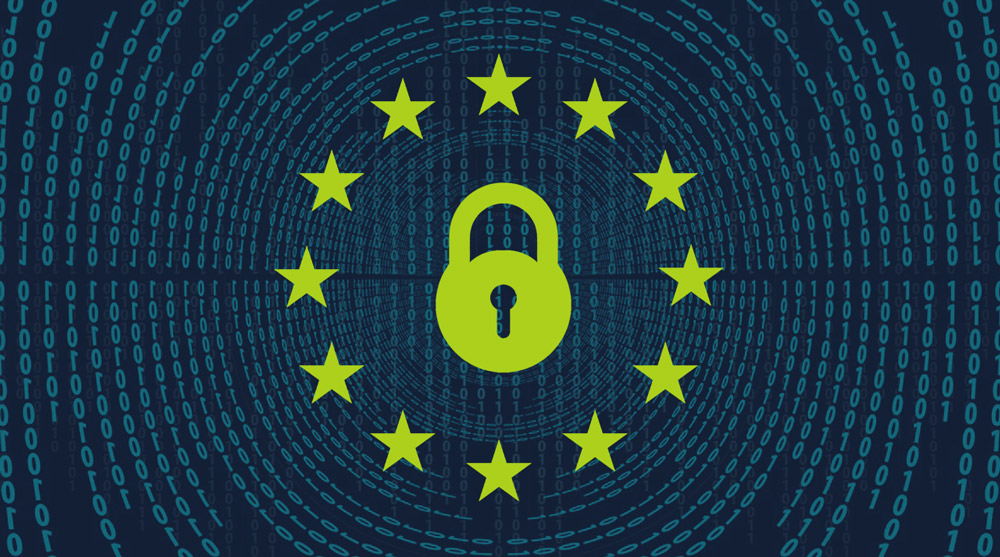Table of Contents
The EU established the GDPR as an act of legislation that protects the rights of individuals regarding how their personal data is used. With effect from May 25, 2018, GDPR strengthens and integrates data privacy laws within the 27 EU member states, replacing the EU’s 1995 Data Protection Directive. The European Parliament approved GDPR on May 24, 2016.
Any organization that collects and uses personal data is subject to GDPR requirements under the following conditions:
- If it operates as an official organization, charitable entity, or commercial enterprise within the EU, or
- If it offers products or services within the EU, regardless of where the organization is registered (including organizations based outside the EU).
The GDPR ensures that businesses have adequate data protection for sensitive data of customers and employees in order to prevent data breaches, including those caused by data disclosure, loss, or misuse. European regulations state that noncompliance resulting from data breaches may incur penalties of up to EUR 20 million, which equates to 4% of an organization’s global annual revenue.
The GDPR covers full compliance in,
- The organization’s data management.
- Getting user consent before establishing corporate-wide data protection policies.
- Handling incidents related to data breaches.
This summary outlines how the GDPR secures personal data and emphasizes the importance of an organization’s end-to-end data security policies in order to be compliant with the regulations.
Why is GDPR important?

Data security and intellectual privacy are becoming more prominent among businesses. In order to safeguard the data that customers entrust them with, organizations are going above and beyond, which is why the General Data Protection Regulation, or GDPR, is being enforced.
The GDPR ensures that you comply to,
- Which personal data regarding a person should be collected and which should not be collected?
- Which personal data is allowed to be stored, and which is not for future use?
- How and where do you store the personal data that has been collected?
- Why is it required to collect and store personal data?
- How do you persuade individuals to give you their consent to collect personal data?
A PwC analysis revealed that organizations spend over $1 million (about €900,000) on compliance. That number might, however, be considerably greater in various circumstances.
However, it was found that 40% of those surveyed spent more than $10 million, and 88% spent more than $1 million, on GDPR costs related to compliance.
What is Personal data?
GDPR defines personal data as any information about a living person (data subject) that can be used to identify them directly or indirectly, such as their name, identification number, phone number, location, online identifier, or any particulars pertaining to their physical, physiological, genetic, mental, economic, cultural, or social identity.
What is Sensitive data?
Sensitive data is a subcategory of an individual’s classified personal data that needs to be protected from unauthorized access. Organizations should process sensitive data with extreme caution. Any data that discloses a person’s identity is considered sensitive data under GDPR, and processing of such data is subject to stricter regulations. Sensitive data is defined under the GDPR as a specific category of data with different processing obligations than other personal data.
Sensitive data includes the following individual data:
- Biometric data, including palm prints, fingerprints, facial and iris recognitions, etc. Genetic data such as DNA etc.
- Web data, including RFID tags, IP addresses, cookie data, etc.
- Data regarding race or ethnicity.
- Political beliefs and viewpoints.
- Sexual Perspectives.
- Monetary data.
- Religious and philosophical ideas
Data Handlers
Two categories of data handlers are defined by the GDPR, and each is responsible for safeguarding personal data throughout the processing lifecycle.
Data Controllers
A person, public body, agency, or any other organization that determines the reason and means of processing personal data, either by itself or together with third parties. Additionally, they have to make sure that resources, both internal and external (i.e., contractors), fulfill the GDPR.
Data Processors
An individual, public body, agency, or any organization that processes personal data on behalf of the controller.
If you are a data processor or controller, it is your responsibility to make sure that you adhere to the GDPR and provide proof of your adherence to the regulations of data protection.
Authorities in charge of data protection in EU member states possess the authority to bring legal action against both data controllers and processors for any violations of GDPR.
GDPR Principles
Organizations are obligated under GDPR to collect and process personal data in compliance with the seven standard data protection principles.
1. Lawfulness, Fairness, and Transparency
Only specific and legitimate purposes should be followed while collecting personal data.
2. Purpose Limitation
Only specific purposes should be fulfilled by the use of personal data.
3. Data Minimization
Processing should be restricted only to the required personal data.
4. Accuracy
The collected personal data should be accurate and updated.
5. Storage Limitation
Personal data can only be stored for as long as is required.
6. Integrity and Confidentiality
Personal data should be processed with adequate security, secured against unauthorized or illegal processing, accidental loss, damage, or destruction, and stored in a secure place.
7. Accountability
It is important for organizations to maintain the required documentation as evidence of their compliance with regulations.
Privacy Guidelines
“Privacy by Design” and “Privacy by Default” are the two types of data protection policies that GDPR mandates.
Privacy by Design
Ensuring that organizations’ systems, policies, and design processes adhere to GDPR from the very beginning of the development of new products or services.
Privacy by Default
Implementing the appropriate security measures at the organizational level ensures that data controllers and processors only collect and utilize personal data for the purposes for which it was collected.
In order to ensure data protection by design and default, organizations must adhere to the two steps defined by GDPR:
- In order to protect personal data of individuals, the data controller must set up the required organizational and technological measures.
- There is no one-size-fits-all approach because every organization faces different risks. They must, instead, adjust their approach and plan of action in accordance with the degree of severity of the risk and the available resources.
12 Steps to GDPR Compliance
To be compliant, updating your privacy policy and implementing a few new technologies is insufficient. A completely comprehensive approach is required when it comes to information security.

1. Raise Awareness
The most important stakeholders and decision-makers in your organization need to be aware of the changes to the GDPR law. They have become aware that this could actually impact. Significant resource implications could result from the GDPR’s implementation, especially for larger and more complex organizations.
2. Information you Hold
It’s important to maintain a record of the personally identifiable data you possess, where it originated from, and who you share it with. An information audit of the entire organization or of certain business units can be required. You are required under the GDPR to maintain a record of the processing activities you do.
3. Communicate Privacy Information
You should assess your current privacy notices and make any modifications that are required. When gathering personal data from individuals, you must provide them with specifics like their identities and your intended use of their data. This typically takes place with the use of a privacy notice. The General Data Protection Regulation requires that data be presented in a straightforward and understandable way.
4. Individual’s Rights
Evaluate your processes, such as how you would destroy personal data or share it electronically in a generally accepted format, to ensure that they comply with every individual’s right. Under the GDPR, individuals are entitled to the following rights:
- The right to be informed – Before collecting an individual’s data, organizations are required to notify them and get their consent.
- The right to access – Individuals can request organizations for access to their data, which will be given to them at no cost.
- The right to have information corrected – Individuals can get their data updated if they notice it to be inaccurate or incomplete in the organization’s records.
- The right to be forgotten or right to erasure – Individuals have the right to request the deletion of their data by not permitting an organization to use it further.
- The right to restrict processing – Users have the right to ask that their data no longer be processed or utilized.
- The right to data portability – People have the right to have their data transferred to a different service provider in a format that is commonly utilized and machine-readable.
- The right to object – Ensures that, upon request, data processing for direct marketing is promptly halted; this must be made clear to individuals by organizations at the beginning of any communication.
- The right to be notified – Individuals have the right to know about any breach of personal data within seventy-two hours.
5. Subject Access Requests
Update your protocols, decide how to respond to requests within the extended deadlines, and provide any more information that might be needed.
6. Lawful basis for processing personal data
You must ascertain the lawful basis for your processing activity, document it, and update your privacy notice to include a justification in compliance with the GDPR.
7. Consent
To determine whether any modifications are required, you must evaluate the way you get, document, and handle consent. In the event that your consents do not meet GDPR requirements, you should immediately modify them.
Factors to consider in a GDPR Implementation
Stakeholder Involvement
An organization’s IT department is not responsible for complying with GDPR regulations by itself. It is essential to form a task force with individuals from numerous divisions, including operations, finance, marketing, and sales, in order to gather and analyze feedback from consumers.
Risk Assessment
It is essential to conduct a comprehensive risk assessment and implement appropriate actions to mitigate any possible risks.
Data Storage and Access
Every department inside an organization requires to formally identify personal data and who can access it.
Team Compliance and Training
It is essential that all teams are aware of the data that can be shared and the definition of noncompliance.
Data Protection Plan
To ensure compliance with GDPR regulations, organizations need to create, review, and update their data protection plans on a regular basis.
Benefits of GDPR
Improves the Cybersecurity Strength
Improvement of the organization’s overall cybersecurity plan through ongoing review of the framework for data security monitoring and data protection procedures. By doing this, the penalties for data breaches and losses will be reduced.
Better Data Management Process
By removing unwanted data, it generally benefits organizations in cleaning the data they gather and store in their database for business purposes.
Gain in marketing ROI
By keeping an up-to-date consumer database containing valuable data, organizations can make sure that their analyses and strategic plans are based exclusively on real consumers who are interested in their products and services, increasing marketing return on investment.
Maintain Customer Trust & Loyalty
Organizations must collect and manage customer data in a transparent manner in order to comply with GDPR. This will increase the trust and loyalty of both present and potential customers.
Better Business Culture in the global market
Accepting accountability for the protection of customer data upholds the organization’s social business culture and increases the probability that it will draw in more customers than its competitors in the worldwide marketplace.
Conclusion
A radical change in the management, processing, and security of personal data is offered by the GDPR. The majority of IT companies believe adhering to GDPR regulations will significantly increase their competitive advantage and boost the effectiveness of their data management. Over time, this will boost client satisfaction and trust.

